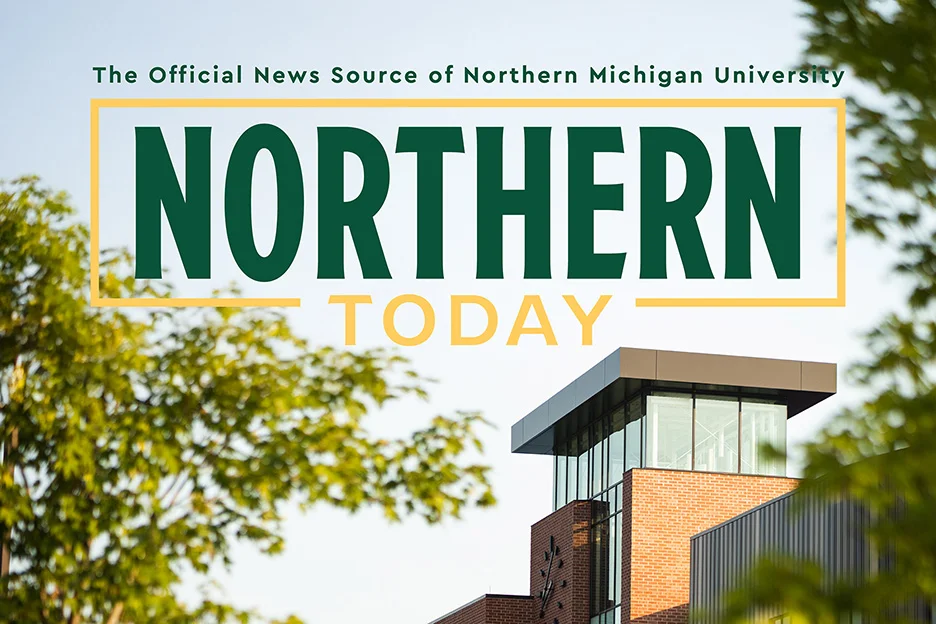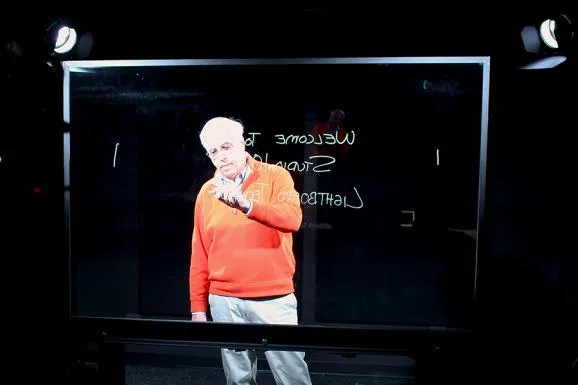NMU recently unveiled Studio 102, a new facility in the Harden Learning Resources Center that enables faculty to record content for online courses and explore virtual reality tools. The centerpiece is a glass lightboard that enables a professor to write in luminous liquid chalk while facing the camera, making “eye contact” with the audience and enhancing student engagement. Software flips the text so that it reads correctly during viewing. Studio lighting, along with acoustic panels on the walls and a rubber floor, also contribute to high-quality video and audio recording capability.
Amy Barnsley, associate professor in the Mathematics and Computer Science Department, has routinely used shorter 4-6 minute videos to explain concepts. Looking for a way to improve on their quality, she pursued the lightboard idea with support from the Center for Teaching and Learning (CTL), Audio-Visual Services and Extended Learning and Community Engagement.
“It was very flattering to have people run with the idea and make it available for all faculty,” Barnsley said. “There are things we can do to enhance teaching. We have to choose to engage in them and there’s a learning curve to figure out the technology, but how cool is it? I recorded three videos in about an hour earlier this week. Stacey Deloose at the CTL is there to guide you through the process. She flips them and puts them in a shared drive so I can download the videos and do a bit more editing. But I’m not a perfectionist.
“I want to provide the best online class I can and this is a better way to convey information. You want students to see you. Increasing their interaction and sense of community also increases pass rates. I really think it makes a difference for them to watch as I emphasize a concept with the lightboard.”
Steve VandenAvond, vice president for Extended Learning and Community Engagement, said one of the differentiators for online education is going to be media. Studio 102 will give NMU an advantage.
“The content is already out there, but institutions going with the old webcam recording of an instructor delivering a lecture are going to lose,” he said. “We can leapfrog ahead of other schools by focusing on student engagement and expectations for how content is delivered. The first step is having a dedicated space to do this. Professors could also complement classroom instruction by posting small modules online. We can also record lessons here and make them available on the [Educational Access Network.]”
The NMU theater and dance program will be able to explore lighting design in the space, but it is primarily intended as a creative venue for faculty.
“We designed the studio with flexibility, whether faculty want to use virtual reality or the lightboard,” said Eric Smith, director of Broadcast and A-V Services. “It’s also purposely located near instructional and A-V support. “We credit Amy Barnsley for her interest in doing this. Then we built a prototype and reviewed it with others on campus. The decision came back that this is important to teaching and learning at Northern.”

